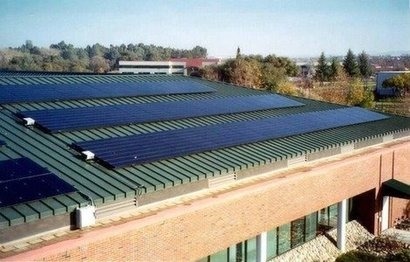
The company has announced that its CIGS layer thickness has now been reduced to 800nm, less than half that of other layers supplied elsewhere, while maintaining performance.
Earlier in the year the company announced it had managed to increase the efficiency of the whole solar cell to 16.2 percent aperture area of the full 156×156 mm cell. Since then, it has raised the efficiency from 16.2 percent to 16.7 percent on 156x156mm aperture area. The new aggressive grading of the CIGS layer has now enabled the company to thin it out to 800 nanometres (nm) when normally the thickness of the CIGS layer is 2000 nm or 2 microns.
“This puts the foundation for low manufacturing cost, which further strengthens the business case and attractiveness for Midsummer’s thin film CIGS solar cells” said Sven Lindström, CEO at Midsummer.
Most light is absorbed in the first 800 nm, so for productivity reasons the absorber layer can be kept thin. This has a number of advantages in that CIGS is the most expensive layer in the solar cell. Therefore, reducing its thickness has major cost advantages while also enabling a reduction in the production time which in turn increases productivity. A thinner CIGS layer also means that it takes less energy to coat the layer and also reduces the time during which the substrate needs to be kept warm.
“Considering that the solar cell is made on stainless steel substrates, contains no cadmium buffer layer and that the production process is an all-dry, all vacuum process where all layers (including the buffer layer) are deposited by sputtering, this achievement by our engineers is truly impressive” Sven Lindström added. “By halving the thickness of the CIGS thin film solar cell the manufacturing cost will be significantly reduced, which further strengthens the business case.”
Midsummer’s scientists see the opportunity to reduce the thickness even further with a reflective back contact, which means that any photons that have passed through the CIGS layer would be reflected and have the chance to do work on the way back.
For additional information:

